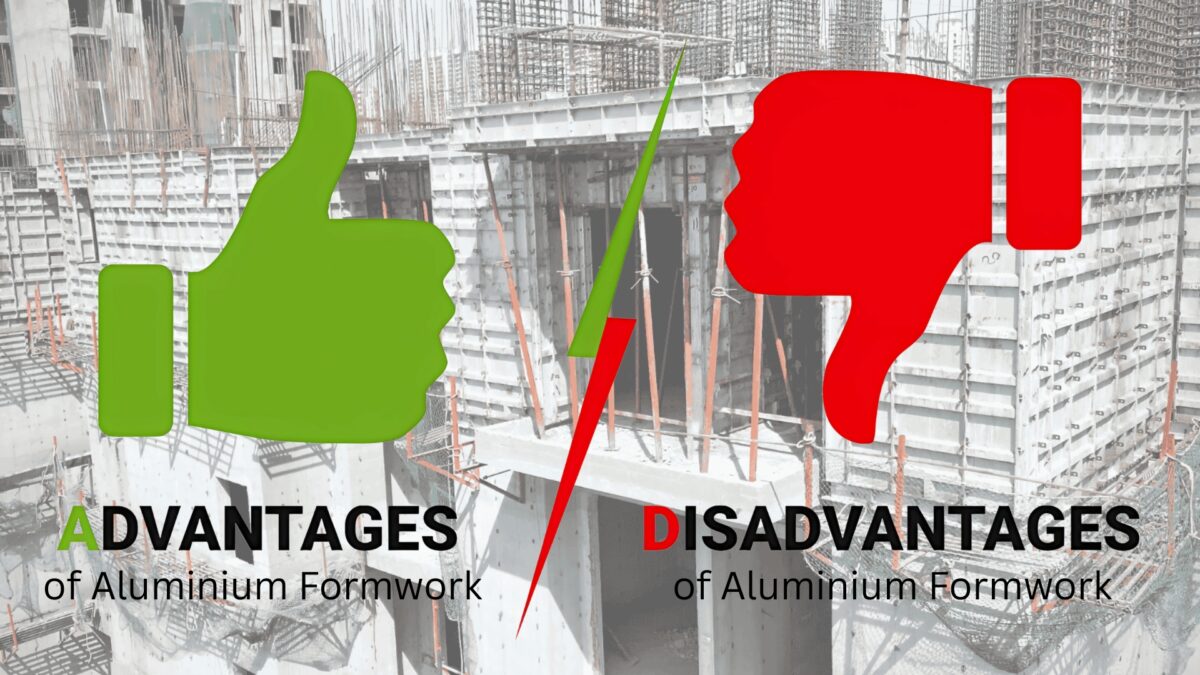
Advantages and Disadvantages of Aluminium Formwork | Manufacto India
Speed, safety, and sustainability are the main priorities in the modern construction landscape. In the ever-evolving construction sector, Aluminium Formwork is now taking center stage as the shuttering technolgoes of building construction are advancing from traditional wooden and steel forms to more efficient forms.
While formwork aluminium was invented for mass housing construction, it is today omnipresent in the high-rise buildings, commercial complexes, and even government infrastructure projects. But what is aluminium formwork? what are its advantages, and more importantly, its drawbacks?
We will discuss the advantages and disadvantages of Aluminium formwork over its counterparts so that you are able to make the right decision for your project.
Definition of Aluminium Formwork
Aluminium Formwork is a concrete modular construction system semi-permanent in nature as it employs high pulverizing strength aluminum alloys. It acts as a temporary shell wherein concrete gets poured to cast slabs, walls, beams, columns, staircases and other building parts.
Unlike traditional formworks which need shuttering separatly for every different part of building, This aluminium formwork system permits entire structure to be constructed monolithically in one go unlike other conventional systems with separated walls and slabs which improves the qaulity of construction as well as saves a lot of time.
Benefits of Aluminium Formwork
1- Speed of Construction
Aluminium formwork is a construction method that greatly increases the speed of construction. Once the system is set up, a typical floor slab is completed in 5-7 days which is advantageous for large scale construction like residential complexes as well as for commercial buildings.
2- High Rousability
Aluminium formwork is advantageous due to its reusability as well. This form of construction can be repeated with one set of aluminium formwork over 200 times. The little maintenance it needs far outweighs the cost of using it repeatedly.
3- Superior Finish Quality
Because aluminium formwork produces smooth concrete surfaces, buildings will have a sophisticated and modern appearance. This makes construction not only attractive but reduces labor as external plastering is minimized.
4- Lightweight Yet Strong
Aluminium also gives the formwork an appealing lightness, which is needed for construction. The ease of use during casting makes it user friendly in a building setting due to the smooth nature and safety.
5- Monolithic Structure
Given proper care of the formwork, builders can cast monolithic Concrete structures which enables ducts, cables, and pipes to be integrated into the floors while the formwork are fixed in place making it easier for the concrete.
6- Labor Efficiency
Even semi-skilled workers can fit the system within an acceptable assembly time, as it has been designed to facilitate easy and fast assembly. Teams can adapt to the system with proper training, reducing dependency on manual carpentry or welding.
7- Environmentally Friendly
The use of aluiminum formwork does not contribute to deforastation like timber or plywood shuttering does. It is also aligned with green building practices and sustainable development goals due to construction waste being reduced with its high reusability.
8- Consistency in Large Projects
Dimensional uniformity is crucial in mass housing or township projects, and aluminum formwork guarantees dimensional accuracy and repeatability for hundreds of units or floors.
9- Reduced Need for Scaffolding
In the early stages for many applications, using the aluminum formwork system reduces the need for external scaffolding due to its integration of support and access platform systems.
Disadvantages of Aluminium Formwork
High Initial Investment
Small-scale or one-time projects are not suitable due to the high initial investment of aluminum formwork when compared to other systems. Traditional systems are much easier to use for single time jobs as well.
Detailed Planning is Required
In the case of a customized solution, construction begins only after detailed planning, including all necessary fabrication drawings, is completed. Additionally, costs and timelines may spiral out of control if there is any last-minute architecture or structural work done.
Limited Flexibility in Design Alterations
After a formwork system has been constructed, changes on-site become complicated. Customized changes during the construction timeline can lead to expensive and tedious processes to create or adjust new panels.
Risk of Damage in Misuse
Aluminium panels are easily capable of suffering dents and deformation which makes them less durable within drops or improper handling. To mitigate risk, proper storage and skilled labor is required to ensure the system lasts over time.
Requires Skilled Supervision to Start with
Labor efficiency does remain quite efficient but initial training and expert supervision are prerequisites during the first few instances to guarantee the correct installation and stripping is achieved.
Economical for Low-Rise Projects
Higher setup expenses may not be favorable for designs with few repetitions or confined built-up areas unless they are integrated into cross-project systems for multiple project designs.
Is Aluminium Formwork Right For Your Project?
Aluminium formwork is a disruptive innovation within construction technology, especially for high-rise residential buildings, affordable housing projects, and large-scale commercial infrastructure projects. It has an unequaled upper hand in construction speed, structural strength, quality assurance, and sustainability.
On the other hand it has its own particular set of problems such as the cost incurred at the early stages of investment and the demand for meticulous planning. That makes it necessary to work with a good aluminium formwork provider who can offer customized engineering solutions, training, and comprehensive support after sales including maintenance services.
Manufacto India focuses exclusively on offering aluminium formwork solutions and custom systems for these areas and other needs specific to India’s construction industry.

